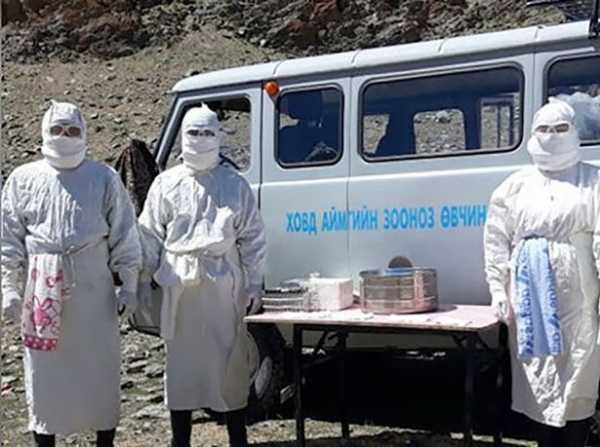A 15-year-old boy has reportedly died after being infected with the bubonic plague in Mongolia – an infection that wiped out 50million people
-

China reports a case of dengue fever on the same day it detects bubonic plague
-

Dozens of people put into quarantine as Bubonic Plague confirmed in China
-

Teens hit by mystery illness after swimming at beauty spot dubbed ‘River Stink’
-

China’s retaliation threat as UK offers sanctuary to 3million Hong Kong citizens
As the world continues to battle the coronavirus pandemic another deadly threat is believed to have claimed the life of a 15-year-old boy.
The teenager died on Sunday from suspected bubonic plague in Mongolia after he is thought to have eaten infected marmot meat, which had been hunted by a dog.
He was admitted to hospital a week ago while dozens of other people have been quarantined after cases of the deadly infection were confirmed in China.
D. Narangeral, head of ministry of health in Mongolia, said: "This is the second plague in our country. Cases of marmot plague have also been reported in Inner Mongolia, China. In this regard, Russia began to take measures to ban marmot hunting.
"While our neighbors are paying close attention, our citizens are being warned not to hunt and eat marmots illegally and to follow their advice."

A 15-year-old boy has reportedly died of the bubonic plague
(Image: AFP via Getty Images)
Two people died from the plague in the Inner Mongolia Autonomous Region of Bayannur last year after contracting the disease from eating the raw meat of a marmot – a type of rodent.
Marmots are a known carrier of the plague bacteria but a World Health Organisation official in Ulaanbaatar, the capital of Mongolia, said consuming raw marmot meat and kidney is a folk remedy for good health.
According to the WHO, the bubonic plague can kill an adult in 24 hours if it is left untreated.
It is a bacterial disease which is spread by fleas living on wild rodents, such as marmots.
Bayannur in Mongolia is now on a level three alert because of the bubonic plague cases, a warning that will stay in place until the end of the year.
Two people died from the plague in the region last year after contracting the disease from eating the raw meat of a marmot – a type of rodent.

The boy is believed to have eaten raw mormot meat
(Image: Eagle News)
It means people must take extra precautions when it comes to stopping the human to human transmission of the infection.
They are also being told to avoid hunting, skinning or eating any animals which could be potential carriers.
The bubonic plague was responsible for the worst pandemic humanity has ever seen when it killed an estimated 50million people in Europe during the Middle Ages.
The bubonic plague is one of three plagues caused by the same bacteria.
It causes agonising swollen lymph nodes, leaves those infected coughing and suffering from both a fever and the chills.

Measures are now being put in place to ensure the disease doesn't spread
(Image: National Center for Zoonotic Diseases)
Known as the Black Death in the Middle Ages, the bubonic plague swept its way through Europe, leaving tens of millions of people dead – more than half the continent's entire population.
It is an infection of the lymphatic system and can also lead to seizures, muscle cramps and gangrene of the toes, finger tips, tip of the nose and the lips.
The same fleas that infect humans with the bubonic plague are also responsible for the septicemic plague and the pnemonic plague.
Anyone infected with the bubonic plague has to have been bitten by a flea containing the deadly bacteria or by eating a plague-infected animal, such as the mormots in Mongolia.
Antibiotics had led to the bubonic plague being contained – but never wiped out – and they are only effective if administered quickly.
Those who are treated in time often make a full recovery.
The WHO has now categorised the bubonic plague as a re-emerging disease, although stresses it would not be as serious as the Covid-19 pandemic.
Each year, up to 2,000 people across the glove are infected with the bubonic plague, with many surviving.
Dr Shanti Kappagoda, an infectious diseases doctor at Stanford Health Care told news site Heathline: "Unlike in the 14th Century, we now have an understanding of how this disease is transmitted.
"We know how to prevent it. We are also able to treat patients who are infected with effective antibiotics."
Sourse: www.mirror.co.uk






